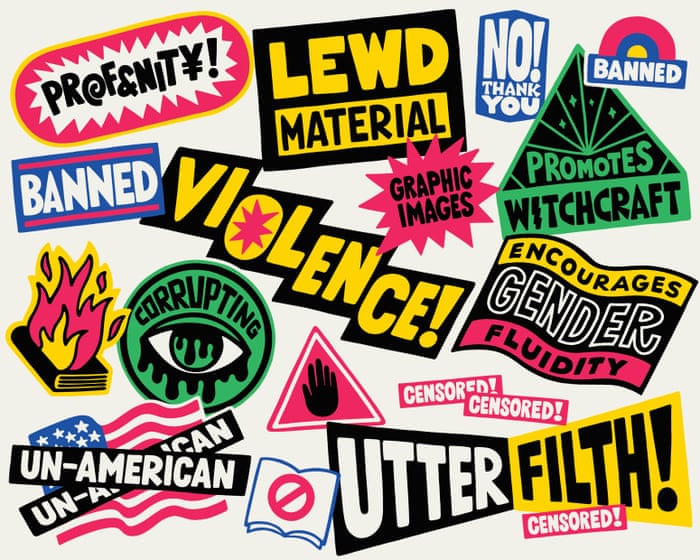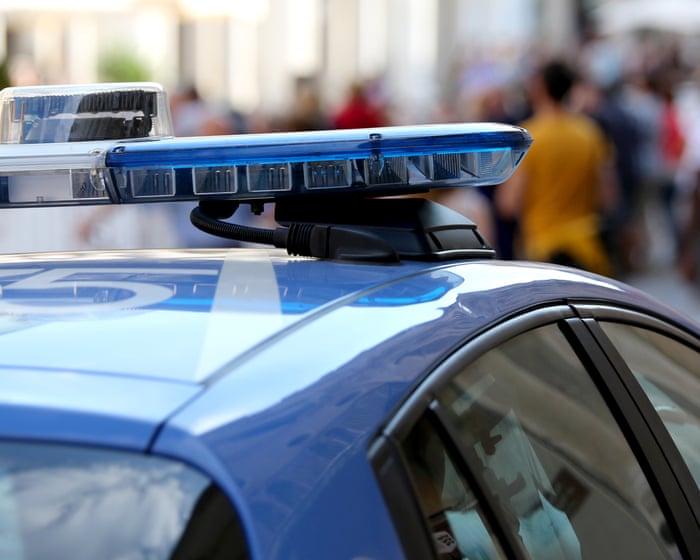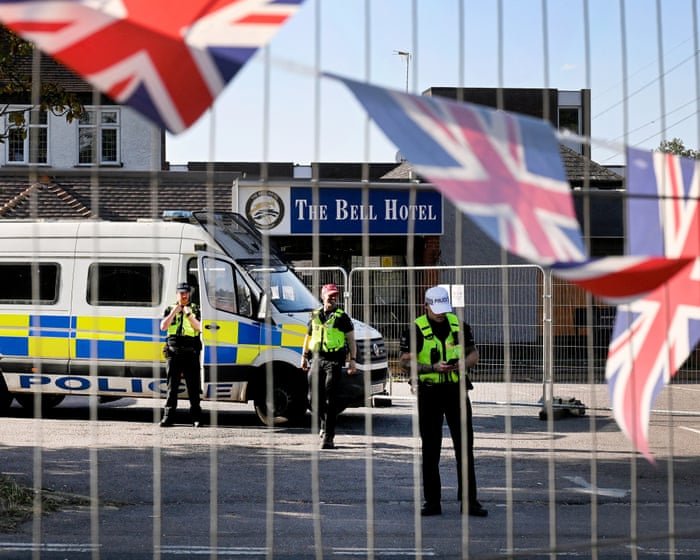It might be tempting to think of book banning as a thing of the past, a relic of less enlightened times. The Catholic Church, for instance, added authors like Jean-Paul Sartre, Alberto Moravia, and Simone de Beauvoir to its Index of Forbidden Books in the 1940s and 50s, but then abandoned the list in 1966 after it had been in use for four centuries. Similarly, public book burnings by Nazis or McCarthyites might seem like grim historical warnings. Yet, even in the United States—a country with strong legal protections for free speech—some still find the act of burning books irresistible. In 2019, students at Georgia Southern University burned copies of Jennine Capó Crucet’s Make Your Home Among Strangers, some shouting “Trump 2020!” In 2022, Nashville pastor Greg Locke held a public bonfire for books he called “demonic,” including the Harry Potter and Twilight series.
Censorship used to be largely the domain of governments or international authorities. While it still is in authoritarian countries like Iran and China, Western nations generally became more liberal in the mid-20th century. Yet a softer form of censorship has long existed in the American school system, where parents can challenge books they deem inappropriate for their children. Often, school boards respond by removing these books from libraries, effectively banning them.
This trend has accelerated in recent years, and the process has become more organized. According to the American Library Association’s 2024 data, most attempts to censor books now come from organized groups. Pressure groups and government entities—including elected officials and administrators—initiated 72% of demands to remove books from school and public libraries. Between 2001 and 2020, such groups challenged an average of 46 titles per year. Last year, that number jumped to 4,190 titles in just 12 months.
Donald Trump’s campaign against diversity, equity, and inclusion (DEI) programs has led some school districts in Texas and Florida to proactively remove large numbers of books over the past year. In another incident earlier this year, a man checked out books on Jewish, Black, and LGBTQ+ history from an Ohio public library and burned them. A video of the bonfire was captioned: “We are cleansing our libraries of degenerate filth.” Joseph Goebbels would have approved.
Here is a selection of other books that have been labeled “degenerate filth”:
Oryx and Crake by Margaret Atwood
Atwood’s 2003 post-apocalyptic novel, in which characters smoke marijuana and watch disturbing content online before a global pandemic upends their lives, is one of the most frequently banned books in American schools. The Utah State Board of Education even prohibits students from bringing the book to school to read in their free time. The board advises that such “dangerous” books should not be given away or resold but instead sent to a designated warehouse in a box labeled “sensitive materials.” Not to be outdone, a Texas school district banned Oryx and Crake in 2024 for promoting “gender fluidity.”
Harry Potter and the Philosopher’s Stone by J.K. Rowling
While the author’s political views have drawn criticism more recently, the Harry Potter books have long faced attempts at removal from U.S. schools for allegedly glorifying the occult or “promoting witchcraft.” These efforts succeeded in places like Zeeland, Michigan in 1999 and Nashville, Tennessee in 2019. Which raises the question…Can you promote something that doesn’t exist?
Milk and Honey by Rupi Kaur
The Indian-Canadian poet gained fame through Instagram, and this collection of minimalist, social media-friendly poetry was first self-published in 2014. It was later commercially released and has sold over 11 million copies. Despite its popularity, the book has faced bans in U.S. school districts, ranking as the ninth most-banned book in the 2022–23 school year. Critics have objected not to Kaur’s stylistic choice to avoid capital letters, but to her exploration of themes like sexual assault. The book remains restricted in districts across eight states.
The Kite Runner by Khaled Hosseini
Hosseini’s 2003 novel, set in Afghanistan before and during the Soviet occupation and Taliban rule, has sold over 8 million copies worldwide. It has long been one of the most banned books in U.S. schools due to its depictions of homosexuality, violence, and ethnic tensions. The 2007 film adaptation was even banned in Afghanistan under Hamid Karzai’s government. Recently, the book was removed from schools run by the U.S. Department of Defense as part of a review announced in 2024—a move that aligns with Donald Trump’s criticism of diversity, equity, and inclusion (DEI) initiatives.
Nineteen Eighty-Four by George Orwell
Orwell’s novel about totalitarian manipulation of truth was partly inspired by his time working at the BBC. The Soviet Union banned it until 1988, seeing it as a direct critique. The book’s relevance endures: Russians protesting the war in Ukraine have been arrested for distributing free copies, and mentioning its title remains forbidden on Chinese social media.
The Satanic Verses by Salman Rushdie
Rushdie’s 1988 novel includes a dream sequence reimagining the life of the Prophet Muhammad, leading to widespread controversy. The book was publicly burned in cities like Bolton and Bradford and banned in several countries, including Pakistan, Bangladesh, Sudan, Sri Lanka, and Venezuela. In 2022, Rushdie was stabbed by a man attempting to carry out a fatwa issued by Iran. Interestingly, in India, a court suggested in 2024 that the original ban may no longer be valid, as the official order appears to have been lost.
The Bluest Eye by Toni Morrison
Morrison’s debut novel, published 55 years ago, tells the story of a young Black girl who wishes for blue eyes to be seen as beautiful. It remains highly controversial, ranking third on the American Library Association’s list of most challenged books in 2024 and being banned in 29 school districts during the 2022–23 school year. Even winning a Nobel Prize in Literature hasn’t shielded Morrison’s work from challenges; her novel Beloved is also frequently targeted.
Persepolis by Marjane Satrapi
This graphic novel, originally published in French in 2000, depicts a young woman’s coming of age during Iran’s Islamic Revolution. It was banned in Iran and temporarily in Lebanon, as the author anticipated. In 2013, it was surprisingly banned by Chicago public schools, though the decision was later reversed. The book continues to face challenges and bans in states like Alaska, Iowa, and Wisconsin, often due to its “graphic language and images.” One parent in Illinois even questioned why a book about Muslims was assigned on September 11.China Dream by Ma Jian
If you wanted to curry favor with the Chinese Communist Party, you probably wouldn’t title your novel after a phrase used by President Xi to describe the “great rejuvenation of the Chinese nation.” Nor would you choose a narrator who is an ambitious provincial official tasked, as Ma Jian has explained, with “suppressing memories of the past and controlling speech in the present.” Published in 2018, this novel is banned in China, like all of Ma’s work since 1987. It was also the first of his books that no Hong Kong publisher would touch. According to Ma, the party has “an army of censors.”
Lolita by Vladimir Nabokov
Nabokov’s most famous novel was first published in France in 1955, as no American publisher would take the risk. Its English-language publisher in France, Olympia Press, lost a lawsuit with the government the following year, and the book was banned from sale. In Britain, it was illegal to import what was called “utter filth,” and publication was banned for several years in the UK, Argentina, and South Africa. New Zealand only legalized it in 1964. In 1958, when the French ban was lifted, a New York Times critic called the novel “dull, dull, dull in a pretentious, florid and archly fatuous fashion,” and “repulsive.” It remains banned in three American school districts.
Nineteen Minutes by Jodi Picoult
This 2007 novel about a school shooting holds the dubious distinction of being the most frequently banned book in U.S. school districts, with 98 bans according to PEN America. Whether suppressing fiction about school shootings reduces actual incidents remains unproven. The most common reason cited for banning the book, as Picoult noted at the Hay Festival, is the use of the word “erection” on page 313.
Lady Chatterley’s Lover by D.H. Lawrence
Subject of the most famous obscenity trial of the 20th century, Lawrence’s novel was banned in Britain and elsewhere after its private publication in 1928. Heavily censored versions were released in the U.S. and UK in 1932. It wasn’t until 1960 that Penguin Books published the full text, leading to a legal battle. The prosecutor famously asked, “Is it a book you would have lying around in your own house? Is it a book you would even wish your wife or your servants to read?” The answer, it turned out, was yes—Penguin won the case.
Thirteen Reasons Why by Jay Asher
TV adaptations usually boost a book’s popularity, but after the 2017 Netflix series based on Asher’s YA novel about teen suicide aired, the book was banned in school districts across eight U.S. states. Some argued the sensationalized TV version may have contributed to a rise in real-life suicides. Asher has said that banning the book is counterproductive, as it tells vulnerable teens that their struggles are not acceptable topics for discussion.
Lysistrata by Aristophanes
This 2,500-year-old comedy, in which women withhold sex to stop war, was seen as a threat to masculine morale in nations emphasizing marital virtue. It was banned in Greece under Nazi occupation and again under the military junta that took power in 1967. In the U.S., it was banned under the Comstock Laws starting in 1873, which prohibited sending “lewd” material through the mail.The Hate U Give by Angie Thomas
Angie Thomas’s highly praised young adult novel, which tells the story of a Black teenager who witnesses her friend being shot by a police officer, has frequently appeared on lists of the most challenged books in American schools since its 2017 release. Objections have included profanity, depictions of drug use, sexual references, and claims of racially insensitive language. The latter concern was raised by the white superintendent of the Katy Independent School District in Texas, who personally removed copies from shelves. Thomas responded by saying, “You’re essentially telling kids their stories don’t deserve to be told. Well, I’m going to tell them even louder. Thanks for fueling the fire.”
Fanny Hill by John Cleland
Written by Cleland while he was in debtors’ prison, this groundbreaking 18th-century work of erotic fiction—presented as the “memoirs of a woman of pleasure”—prompted legal action almost immediately. Within a year of publication, his publishers were taken to court for allegedly “corrupting the King’s subjects,” and the book was officially withdrawn, though underground copies continued to circulate. A pirated edition published in the U.S. in the early 19th century led to the publisher’s conviction in Massachusetts for distributing “lewd and obscene” material. Remarkably, even in the 1960s, London police seized a new edition under the Obscene Publications Act of 1959. An uncensored version of Fanny Hill was not legally available until 1970.
The Witches by Roald Dahl
Dahl’s body of work has recently undergone enthusiastic editing by Puffin, which released politically corrected versions of his books in 2023—removing, among other things, the word “fat.” But The Witches (1983) had long been a target of complaints in American schools. While some liberal critics argued the book was misogynistic for portraying witches as exclusively female, concerned parents in places like Dallas, Oregon, and Dublin, Ohio, succeeded in having it banned—the former for allegedly promoting occultism, and the latter on the unusual grounds that it was “derogatory to children.”
American Psycho by Bret Easton Ellis
Ellis’s satirical masterpiece—which delves into men’s fashion, 1980s music snobbery, and extreme violence—was dropped by its original publisher, Simon & Schuster, just three months before its scheduled release, only to be picked up by Vintage. It has attracted outrage from censors ever since. In the late 1990s, Germany restricted sales to adults only, and for many years the book was officially banned in Queensland, Australia. In a small victory for literary freedom, it can now be purchased there—but only shrink-wrapped and sold to customers over 18.
The Handmaid’s Tale by Margaret Atwood
Any author who appears twice on a list of banned books must be doing something right. Atwood’s most famous novel depicts a future United States transformed into a repressive, sexist theocracy, making contemporary right-wing efforts to remove it from U.S. schools seem like overreaction. The Handmaid’s Tale has been pulled from school libraries in at least 10 states. After it was restricted for high school students in Madison County, Virginia, in 2023, Atwood quipped that perhaps censors hoped to make sex intriguing again by forbidding any mention of it in print. The book remains banned in 67 U.S. school districts.
Slaughterhouse-Five by Kurt Vonnegut
Vonnegut’s first bestseller, centered on the firebombing of Dresden—which he witnessed firsthand—and known for its satirical take on religion, sex, and cosmic questions, was an early target for school bans. Just three years after its 1969 publication, it was removed from shelves.In Oakland, Michigan, schools banned the book after a judge deemed it “depraved, immoral, psychotic, vulgar, and anti-Christian.” In 1973, copies were burned in North Dakota for its “obscene language.” A college professor complained in 2010, saying, “This book contains so much profanity, it would make a sailor blush with shame.” In 2024, school boards in Texas and Florida also banned the novel. So it goes. To explore the books mentioned here and other banned titles, visit guardianbookshop.com. Delivery fees may apply.
Frequently Asked Questions
Of course Here is a list of FAQs about Banned The 20 books they tried to keep from you written in a clear and natural tone
General Beginner Questions
Q What is this book about
A Its a collection that highlights 20 famous books that have been challenged or banned throughout history often for their controversial themes It provides excerpts and explains why each book was targeted
Q Why would someone want to ban a book
A Books are typically challenged or banned because people object to their content which can include themes like sexuality offensive language political ideas religious viewpoints or depictions of violence
Q Is this book just for students or teachers
A No its for anyone interested in literature free speech history or understanding censorship Its a great resource for curious readers of all kinds
Q Does the book contain the full text of the banned books
A No it does not contain the complete novels It features key excerpts from each of the 20 books to give you a sense of their style and controversial content along with commentary
Q What are some examples of books featured
A You can expect to find famous challenged books like The Catcher in the Rye by JD Salinger To Kill a Mockingbird by Harper Lee 1984 by George Orwell and The Absolutely True Diary of a PartTime Indian by Sherman Alexie
Deeper Advanced Questions
Q Whats the difference between a challenge and a ban
A A challenge is an attempt to remove or restrict access to a book A ban is the actual removal of that book from a library school or curriculum Most featured books have been successfully banned in some places
Q How does this book help me understand censorship today
A By showing the historical patterns of censorship it helps you recognize modernday attempts to control information It argues that understanding past bans is key to protecting free speech now
Q Does the book take a side on the issue of banning books
A Yes the book is clearly against censorship It presents the books and the reasons they were banned to encourage readers to think critically and decide for themselves promoting the freedom to read




